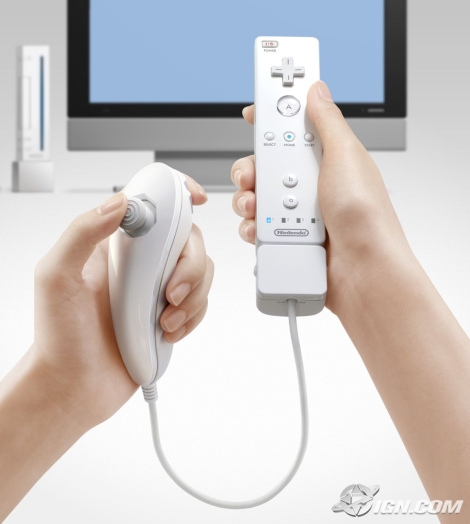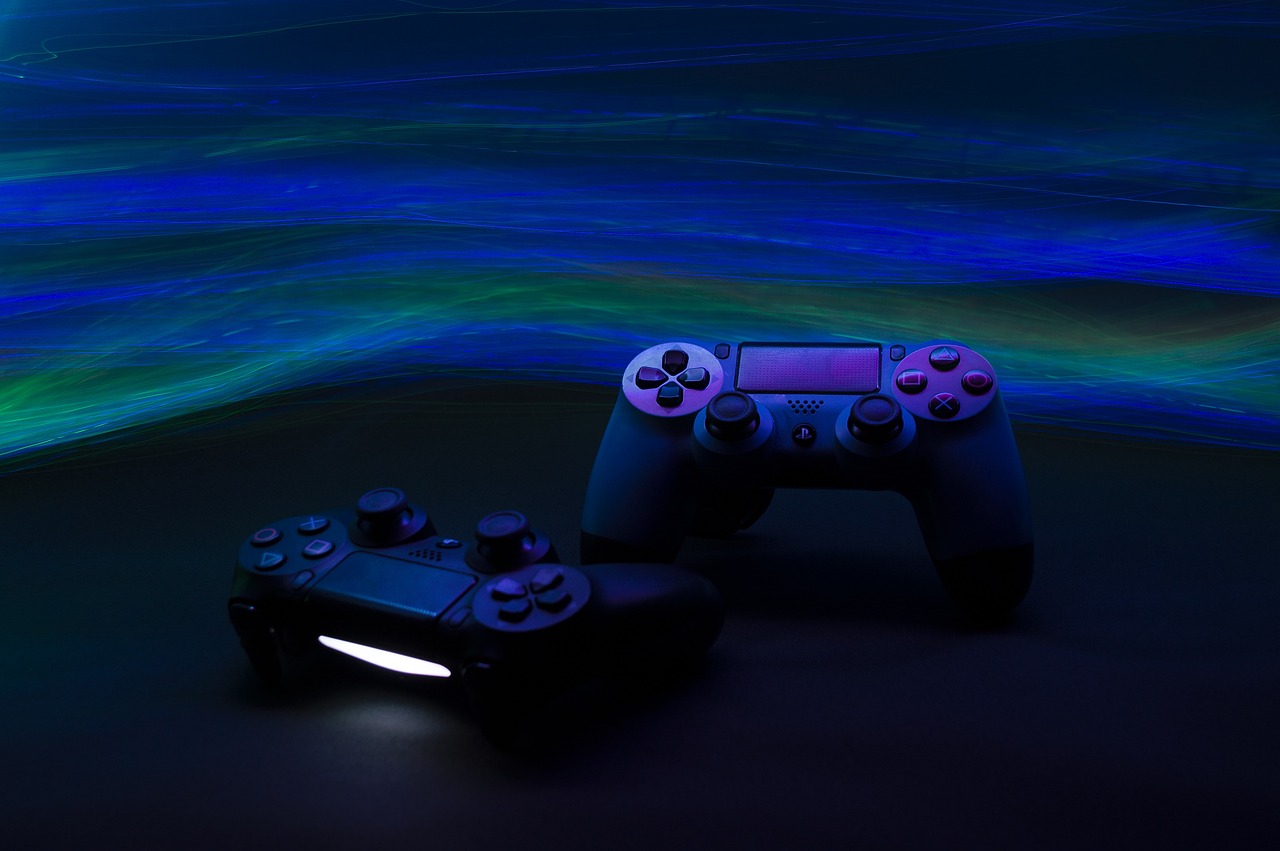Table of Contents
The world of video gaming has seen remarkable transformations over the years, and one of the most evident and influential aspects of this evolution has been the game controller. From the simple joysticks of the past to the sophisticated motion-sensing devices of today, the journey of game controllers is a fascinating reflection of technological advancements and changing gaming experiences. In this article, we’ll delve into the captivating evolution of game controllers, tracing their development from humble beginnings to cutting-edge innovation.
The evolution of game controllers is a captivating journey that mirrors the rapid advancements in technology and the dynamic landscape of the gaming industry. From their humble beginnings to the cutting-edge innovation of today, game controllers have played a pivotal role in shaping the way we interact with digital worlds. Let’s delve deeper into this fascinating evolution:
The Pioneering Era (1970s-1980s): In the early days of gaming, simplicity reigned supreme. Game controllers were basic, with the Atari 2600 joystick being one of the pioneers. It featured a single button and a joystick for directional input. These early controllers set the foundation for gaming but lacked the complexity we see today.
The Rise of the D-pad (1980s-1990s): The Nintendo Entertainment System (NES) brought about a significant shift with the introduction of the directional pad or D-pad. This innovative design allowed for more precise and varied movements in games like Super Mario Bros. The NES controller became iconic and established the D-pad as a standard feature.
The Era of Expansion (1990s-2000s): With the advent of 3D gaming, controllers needed to evolve. Sony’s PlayStation controller added two analog sticks for enhanced 3D movement, while the Nintendo 64 introduced the world to the first successful analog stick. These additions enabled greater control and immersion in 3D environments.
Wireless Freedom (2000s-2010s): The 2000s saw the proliferation of wireless controllers, freeing gamers from the constraints of cords. Bluetooth technology became commonplace, offering seamless connectivity. The Xbox 360 controller, known for its ergonomic design and precise analog sticks, was a prime example of this era’s innovations.
Motion Sensing Revolution (Late 2000s-Present): The Nintendo Wii ushered in a motion-sensing revolution with its motion controller. Players could physically mimic actions in games, leading to the widespread popularity of games like Wii Sports. Sony’s PlayStation Move and Microsoft’s Kinect furthered this trend, bringing motion sensing to a broader audience.
Integration of Touchscreens (2010s-Present): The advent of smartphones and tablets influenced gaming controllers. Devices like the PlayStation Vita and the Nintendo Switch incorporated touchscreens, blurring the lines between traditional and mobile gaming. Touch-sensitive surfaces added new dimensions to gameplay.
Customization and VR (Present and Beyond): Modern controllers, like those for the PlayStation 5 and Xbox Series X, focus on customization and haptic feedback. Adaptive triggers, touchpads, and advanced rumble technologies enhance immersion. Moreover, virtual reality (VR) controllers, like those used with Oculus Rift and HTC Vive, have opened up entirely new dimensions in gaming.
The Future of Game Controllers: As we look ahead, game controllers are likely to continue evolving. Integration with augmented reality (AR), brain-computer interfaces, and more sophisticated haptic feedback are on the horizon. These innovations will redefine how we interact with virtual worlds and push the boundaries of immersive gaming experiences.
In conclusion, the journey of game controllers is a testament to human ingenuity and our relentless pursuit of more immersive and enjoyable gaming experiences. From simple joysticks to complex, sensor-laden devices, these controllers have not only shaped the way we play but have also transformed the gaming industry itself, opening doors to uncharted realms of possibility in the digital realm.
For a comprehensive look at this subject, we invite you to read more on this dedicated page: Review of Three-Dimensional Human-Computer Interaction with …
The Early Days: Joysticks and Paddles
The origins of video game controllers can be traced back to the early days of arcade gaming in the 1970s. The earliest controllers were basic and intuitive, designed to provide users with a straightforward means of interacting with the game. Joysticks, often accompanied by a single button, allowed players to move characters or objects on the screen. These controllers found their way into popular games like “Pong” and “Space Invaders.”
Around the same time, paddle controllers were introduced, primarily for games like “Breakout.” Paddle controllers featured a dial or wheel that allowed players to control the movement of a paddle on the screen, reflecting the simplicity of early arcade games.
For a comprehensive look at this subject, we invite you to read more on this dedicated page: The fascinating history of the video game controller: 50 years of …

The NES Revolution: D-Pads and Buttons
The 1980s marked a significant turning point in the evolution of game controllers with the introduction of the Nintendo Entertainment System (NES). The NES controller featured a directional pad (D-pad) and a complement of buttons, including the iconic A and B buttons. This layout became the template for countless controllers to come and remains influential even today.
The D-pad allowed for precise movements in games, and the combination of buttons expanded gameplay possibilities. This design set the standard for home console controllers and made gaming accessible to a broader audience.
The impact of the Nintendo Entertainment System (NES) controller in the 1980s extended far beyond the gaming industry of that era. Here’s how this revolutionary design continued to shape the world of gaming and even other technologies:
Standardization of Controls: The NES controller’s layout became a standard not only for subsequent Nintendo consoles but also for many other gaming platforms. The A and B buttons, D-pad, and start/select buttons became synonymous with gaming. This standardization simplified game development and ensured a consistent user experience across different systems.
Innovation in Game Design: The NES controller’s layout encouraged game developers to create innovative gameplay mechanics. The limited number of buttons forced developers to think creatively about how to use them effectively, resulting in memorable games like Super Mario Bros., The Legend of Zelda, and Metroid. This period of experimentation laid the foundation for modern game design principles.
Cross-Generational Appeal: The intuitive design of the NES controller made gaming accessible to a wide range of players, from children to adults. This appeal transcended generations, as many people who grew up with the NES continued to enjoy gaming on later consoles, sharing their love for gaming with their children and grandchildren.
Retro Gaming Renaissance: The NES controller’s iconic design has seen a resurgence in popularity in recent years with the rise of retro gaming. Classic NES-style controllers are now available for modern gaming systems and PC gaming, appealing to both nostalgic gamers and newcomers who appreciate the simplicity and effectiveness of the design.
Accessibility in Other Industries: The principles of intuitive design introduced by the NES controller have influenced user interface design in other industries as well. The idea of using a directional pad for navigation and a limited number of buttons for interaction is seen in various devices, from TV remotes to smartphone apps.
Cultural Icon: The NES controller, with its distinctive design, has become a cultural icon. It’s instantly recognizable to gamers and non-gamers alike, symbolizing the nostalgia and joy associated with the golden era of gaming. This recognition has led to its incorporation into various forms of pop culture.
Evolution of Controllers: While the NES controller laid the groundwork for gaming controllers, it also sparked a continuous evolution. Subsequent controllers, such as the Super Nintendo Entertainment System (SNES) controller and the PlayStation DualShock controller, built upon the NES’s design principles by adding more buttons, analog sticks, and ergonomic improvements to cater to evolving gameplay demands.
Influence on Game Accessibility: The simplicity and accessibility of the NES controller design have had a positive impact on game accessibility for individuals with disabilities. Game developers and hardware manufacturers have drawn inspiration from this design to create more inclusive gaming experiences.
In summary, the NES controller’s introduction in the 1980s marked a pivotal moment in gaming history. Its enduring legacy is not only seen in the continued use of its design principles in modern controllers but also in the broader cultural impact it has had on gaming and user interface design across various industries. It remains a testament to the power of thoughtful design in shaping the way we interact with technology and entertainment.
You can also read more about this here: The Evolution Of Video Game Controller | Mega Modz Blog

The Era of Analog Sticks and Triggers
As gaming transitioned into the 3D era in the late 1990s and early 2000s, controllers needed to adapt to the increased complexity of games. The Sony PlayStation introduced the DualShock controller, featuring analog sticks that allowed for more nuanced movement in 3D environments. This innovation was further refined with the introduction of dual analog sticks, providing greater control and immersion.
Additionally, the inclusion of shoulder buttons and triggers expanded the range of actions players could perform. The Xbox controller, released in 2001, introduced the concept of pressure-sensitive triggers, allowing for variable input based on the degree of button press—a feature still essential in modern controllers.
For a comprehensive look at this subject, we invite you to read more on this dedicated page: Amazon.com: YCCTEAM Wireless Game Controller Compatible with …

The Advent of Motion Sensing
The mid-2000s witnessed a seismic shift in the gaming world with the introduction of motion-sensing controllers. The Nintendo Wii, released in 2006, featured the Wii Remote, which allowed players to interact with games through physical gestures. This innovation brought a new level of interactivity and accessibility to gaming, appealing to a broad demographic.
The success of the Wii inspired competitors to explore motion-sensing technology. Sony introduced the PlayStation Move, and Microsoft developed the Kinect for the Xbox. These devices used cameras and sensors to track players’ movements, enabling a wide range of motion-based gaming experiences.
For a comprehensive look at this subject, we invite you to read more on this dedicated page: Motion controls move games into the future

Modern Controllers: Versatile and Adaptive
Today’s game controllers have become incredibly versatile and adaptive. They often incorporate a combination of traditional buttons, analog sticks, touchpads, and motion sensors. This adaptability allows players to choose the control method that best suits their gaming preferences.
The rise of virtual reality (VR) gaming has also given birth to specialized controllers designed to immerse players in a virtual world. These controllers often feature precise tracking, haptic feedback, and ergonomic designs to enhance the VR experience.
Today’s game controllers have evolved into highly versatile and adaptive tools, catering to the diverse needs and preferences of gamers. The integration of various input methods has transformed the gaming experience into a more personalized and immersive adventure.
Tailored Gaming Experience: The inclusion of traditional buttons, analog sticks, touchpads, and motion sensors in modern controllers allows gamers to tailor their gameplay experience. Whether you prefer the precision of analog sticks for aiming, the tactile feedback of buttons for action sequences, or the intuitive swipes on a touchpad, you have the freedom to choose what feels most comfortable and effective for your gaming style.
Accessibility: Game controllers have made significant strides in accessibility. They now offer customizable button mapping, which is crucial for players with disabilities, ensuring that everyone can participate in the gaming community regardless of their physical abilities.
Virtual Reality (VR) Revolution: The advent of VR gaming has ushered in a new era of controllers designed specifically to immerse players in virtual worlds. These specialized controllers boast features like precise tracking, enabling your real-world movements to translate seamlessly into the virtual environment. Additionally, haptic feedback technology allows you to feel the virtual world through vibrations and sensations, further blurring the line between reality and the game.
Ergonomic Excellence: Controller design has also evolved to prioritize ergonomics. Manufacturers now focus on crafting controllers that fit comfortably in your hands, reducing fatigue during extended gaming sessions. This ergonomic consideration is especially crucial in VR, where immersion relies on uninterrupted comfort.
Innovative Control Schemes: Game developers continually explore innovative control schemes that harness the full potential of these versatile controllers. Whether it’s using motion sensors to mimic real-world actions or implementing touch-sensitive surfaces for unique interactions, these controllers enable new and exciting gameplay possibilities.
Cross-Platform Compatibility: Many modern controllers offer cross-platform compatibility, allowing you to use the same controller across various gaming systems, from consoles to PCs. This streamlines the gaming experience and ensures that your preferred control method remains consistent.
Retro Appeal: Despite the technological advancements, some gamers still cherish the nostalgia of retro controllers. Manufacturers have recognized this sentiment and produced modern controllers with a classic design, offering the best of both worlds – a touch of nostalgia with contemporary functionality.
Future Possibilities: As technology continues to advance, we can anticipate even more innovative features in game controllers. These may include biometric sensors, advanced haptic feedback systems, or even integration with emerging technologies like augmented reality (AR) for entirely new gaming experiences.
In conclusion, modern game controllers have become adaptable, ergonomic, and versatile tools that enhance the gaming experience. Whether you’re a traditionalist who enjoys the familiarity of buttons or an enthusiast of immersive VR worlds, today’s controllers provide a wide array of options to cater to your gaming preferences. With ongoing advancements, the future promises even more exciting possibilities for gamers and their controllers.
For additional details, consider exploring the related content available here How Virtual Reality Technology Has Changed Our Lives: An …

Looking Ahead: The Future of Game Controllers
As technology continues to advance, the future of game controllers holds exciting possibilities. Emerging technologies such as haptic feedback, adaptive triggers, and even brain-computer interfaces are shaping the next generation of controllers. These innovations aim to further blur the line between the virtual and real worlds, providing gamers with more immersive and intuitive experiences.
As technology continues to advance, the future of game controllers holds exciting possibilities. Emerging technologies such as haptic feedback, adaptive triggers, and even brain-computer interfaces are shaping the next generation of controllers. These innovations aim to further blur the line between the virtual and real worlds, providing gamers with more immersive and intuitive experiences.
Haptic feedback, for instance, has the potential to revolutionize how gamers perceive and interact with virtual environments. Imagine feeling the impact of footsteps on different terrains, the recoil of a virtual weapon, or the sensation of raindrops in a game—all through the vibrations and tactile feedback delivered by your controller. This level of immersion can transport players deeper into the gaming experience, making every moment more tangible and memorable.
Adaptive triggers, another promising advancement, can enhance gameplay by providing varying levels of resistance in response to in-game actions. This means that pulling the trigger of a virtual bow to fire an arrow, for instance, could require a different level of force than firing a gun. This nuanced feedback can significantly improve the realism and engagement of gameplay, making each action feel more authentic and challenging.
And then there’s the intriguing prospect of brain-computer interfaces (BCIs) in gaming. BCIs have the potential to read a player’s neural signals and translate their thoughts into in-game actions. This technology could open up entirely new possibilities for gameplay, allowing for direct mental control of characters or objects within the virtual world. While still in its early stages, BCIs hold the promise of making gaming more inclusive and accessible to individuals with physical disabilities.
Beyond these technological marvels, the future of game controllers also involves more seamless integration with virtual and augmented reality environments. Imagine a controller that not only detects your hand movements and gestures but also maps them onto a virtual avatar, allowing you to interact with VR or AR spaces with unprecedented precision and intuitiveness.
In conclusion, the evolution of game controllers is an exciting journey into the convergence of technology and immersive gaming experiences. These innovations, from haptic feedback to brain-computer interfaces, have the potential to redefine how we play and engage with virtual worlds, bringing us closer to truly immersive and intuitive gaming experiences that were once the stuff of science fiction. As these technologies continue to mature, gamers can look forward to a future where the boundaries between reality and the virtual realm become increasingly blurred, offering endless possibilities for creativity and enjoyment.
Should you desire more in-depth information, it’s available for your perusal on this page: The Evolution of the Video Game Controller

In conclusion, the evolution of game controllers reflects the evolution of gaming itself. From the simplicity of joysticks to the complexity of motion-sensing devices, controllers have continuously adapted to meet the demands of an ever-changing industry. As gaming technology continues to push boundaries, we can expect controllers to play an integral role in shaping the future of interactive entertainment, offering new dimensions of gameplay and immersion for generations of gamers to come.
In summary, the journey of game controllers mirrors the dynamic evolution of the gaming landscape. It’s a testament to the industry’s relentless pursuit of innovation and the ever-growing expectations of players. From the humble beginnings of joysticks to the intricate web of motion-sensing and haptic feedback technologies, controllers have always been at the forefront of gaming’s transformation.
Looking ahead, the future of game controllers holds incredible promise. As gaming technology advances at an unprecedented pace, controllers are set to become even more integral to the immersive experiences of tomorrow. Here’s how:
Enhanced Immersion: Controllers of the future will blur the line between the virtual and real worlds. Advanced haptic feedback, adaptive triggers, and sensory technologies will immerse players like never before, making every interaction in the game world feel tangible and responsive.
Innovative Input Methods: Expect a diverse array of input methods that cater to different gaming styles. Whether it’s brain-computer interfaces, gesture-based controls, or even more intuitive voice commands, controllers will offer players an ever-expanding toolkit for interaction.
Cross-Platform Integration: With gaming ecosystems becoming increasingly interconnected, controllers will adapt to seamless cross-platform play. They will work seamlessly across consoles, PCs, mobile devices, and emerging platforms, offering gamers unparalleled flexibility.
Accessibility: The gaming community is growing more inclusive, and future controllers will reflect this trend. Enhanced accessibility features will ensure that gaming is a welcoming space for players of all abilities, providing customizable controls and adaptive technologies.
Artificial Intelligence: AI-driven controllers will offer personalized gaming experiences. They will learn and adapt to a player’s style, adjusting game dynamics, difficulty levels, and even storylines to create tailor-made adventures.
Integration with Augmented Reality (AR) and Virtual Reality (VR): As AR and VR technologies become mainstream, controllers will evolve to support these immersive environments, enabling users to interact seamlessly with virtual elements.
Environmental Sensing: Future controllers may incorporate environmental sensors to detect factors like lighting, temperature, and ambient noise. This data can be used to enhance gameplay, creating dynamic and responsive in-game experiences.
Sustainability: The gaming industry is increasingly conscious of environmental impact. Controllers will likely be designed with sustainability in mind, incorporating eco-friendly materials and energy-efficient features.
In essence, controllers are poised to continue their role as the bridge between players and the digital realms they explore. They will not only enable new levels of immersion but also empower gamers with greater control and accessibility. As gaming evolves, controllers will remain a cornerstone, guiding us into a future where interactive entertainment knows no bounds. It’s a thrilling journey for both the industry and the players, promising exciting horizons for generations of gamers to come.
For a comprehensive look at this subject, we invite you to read more on this dedicated page: Techniques of EMG signal analysis: detection, processing …
More links
To delve further into this matter, we encourage you to check out the additional resources provided here: The Evolution of the Video Game Controller
